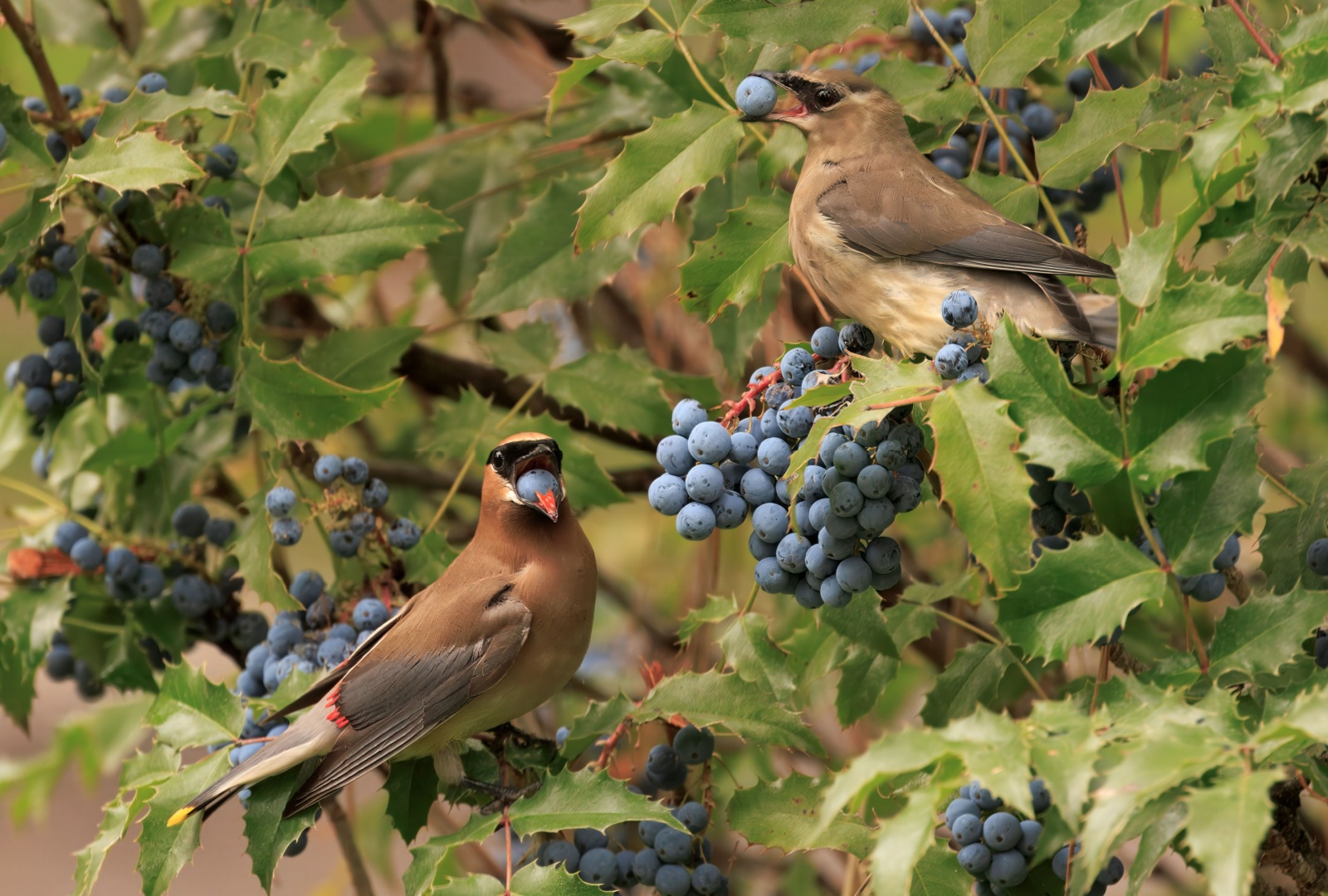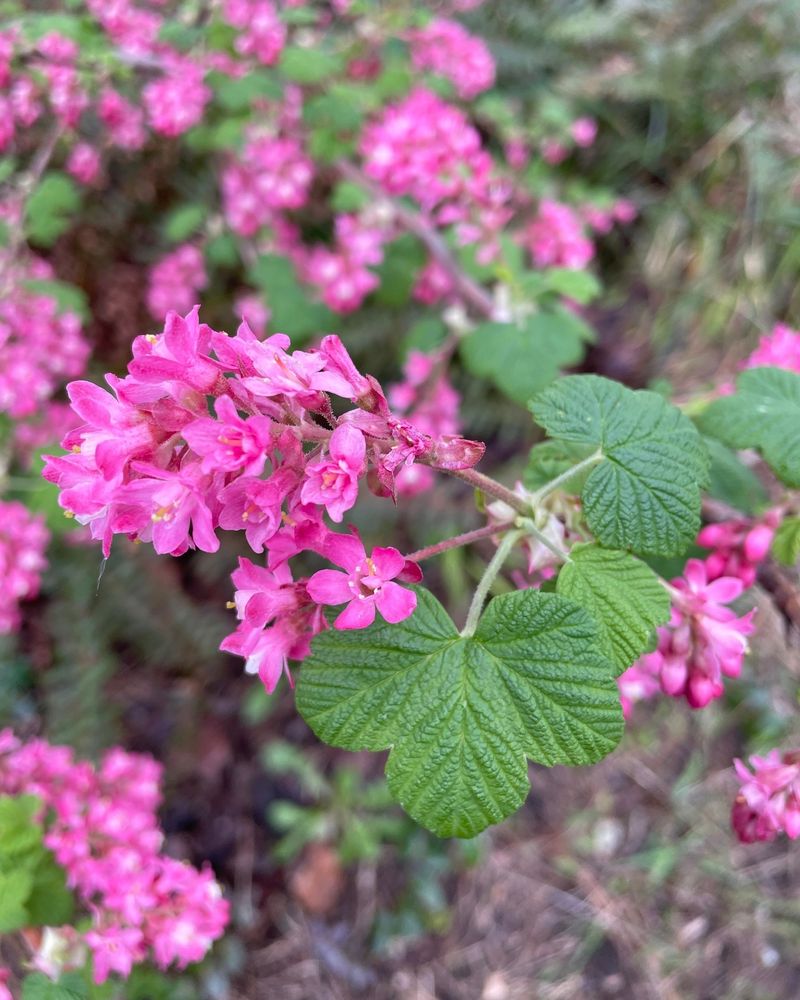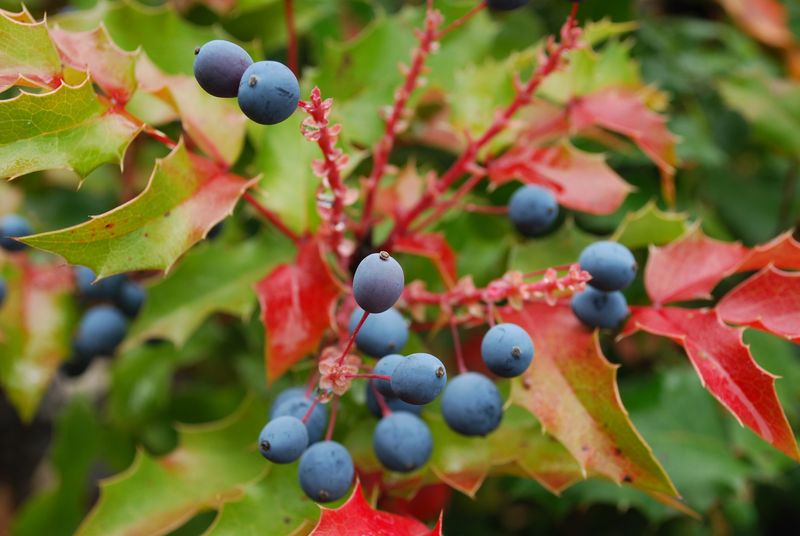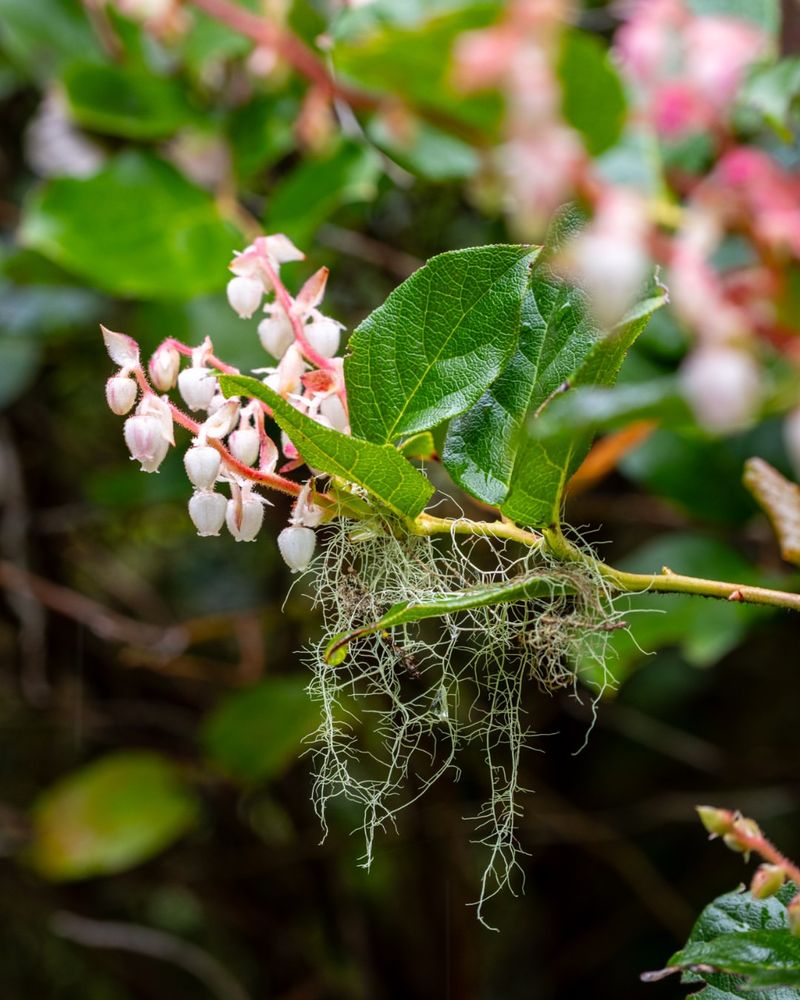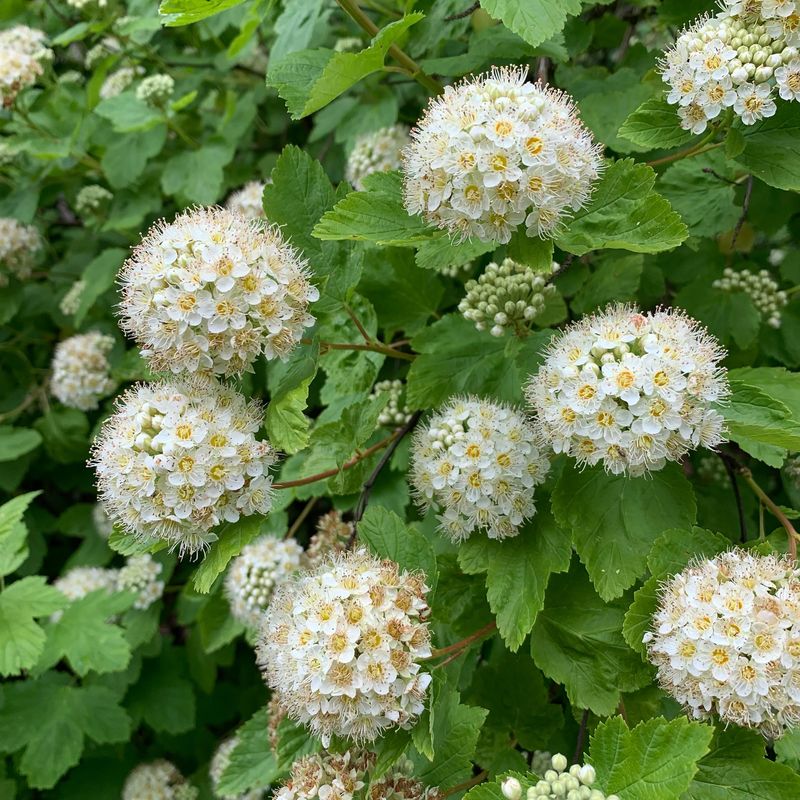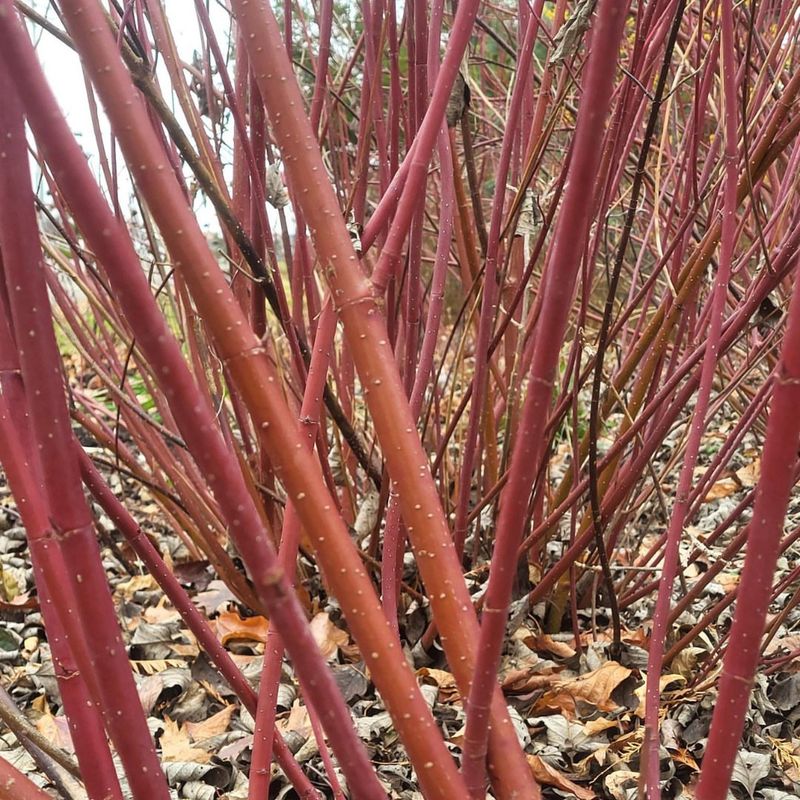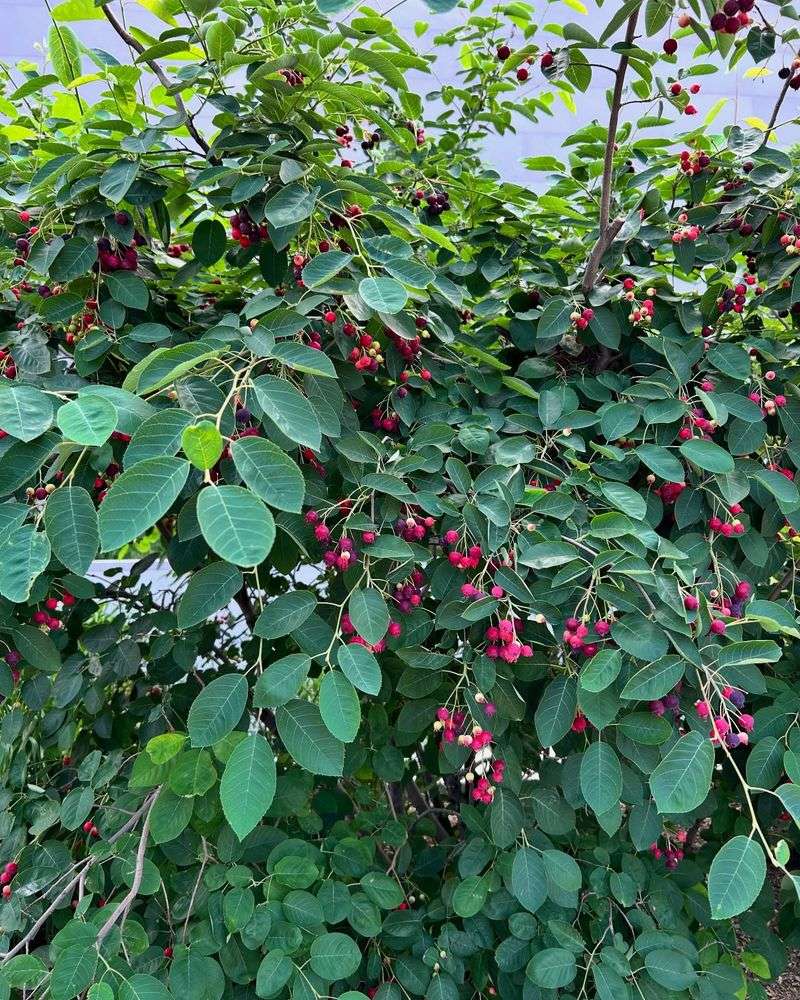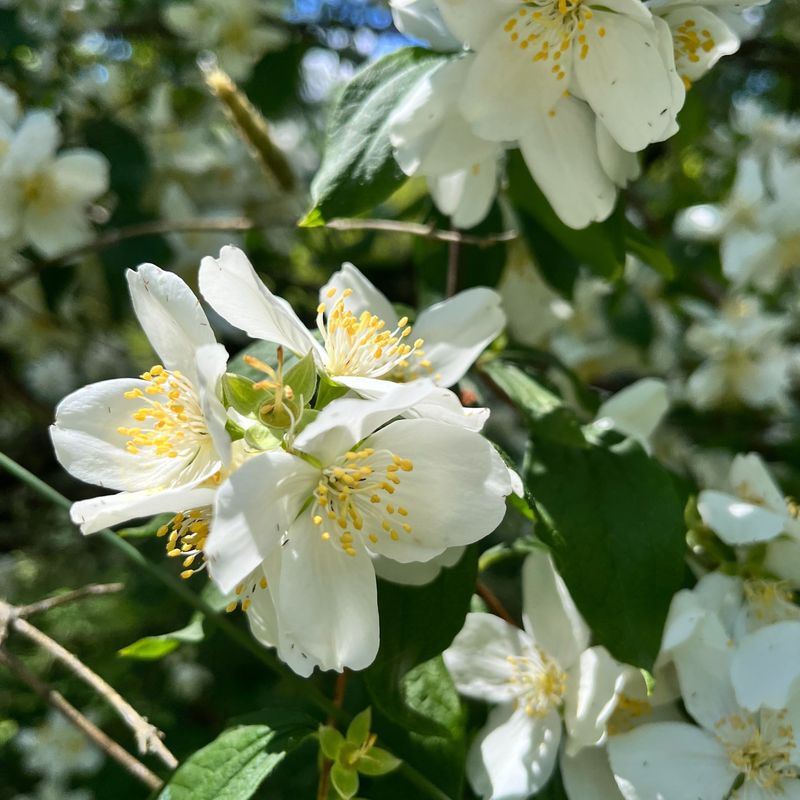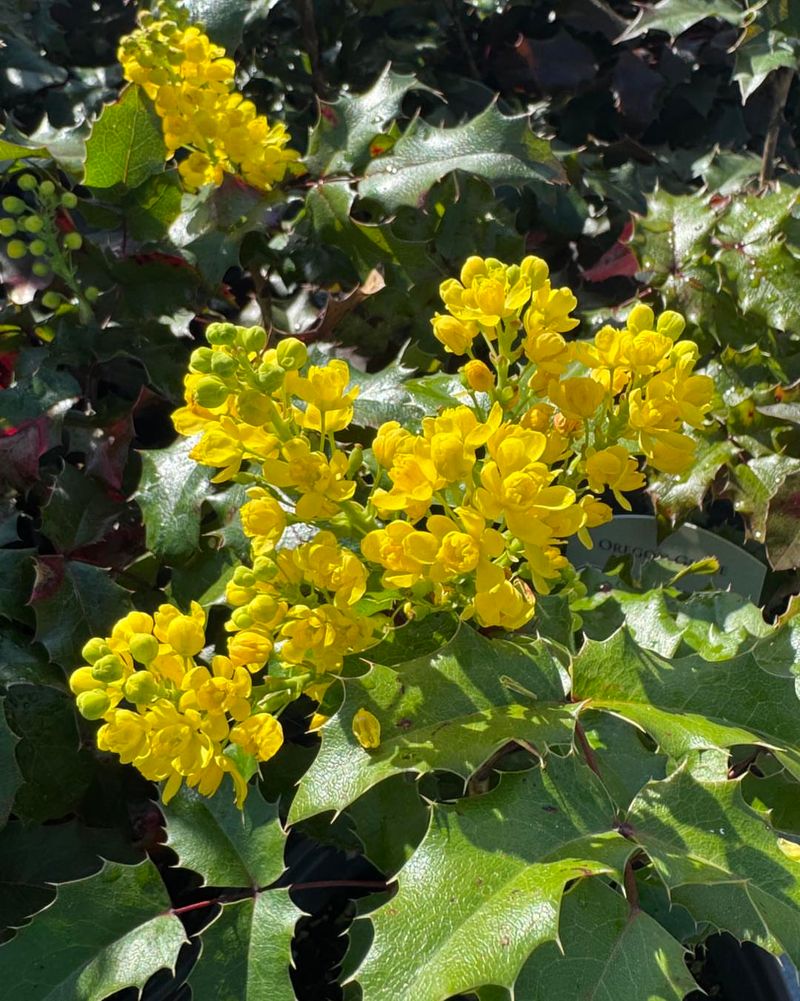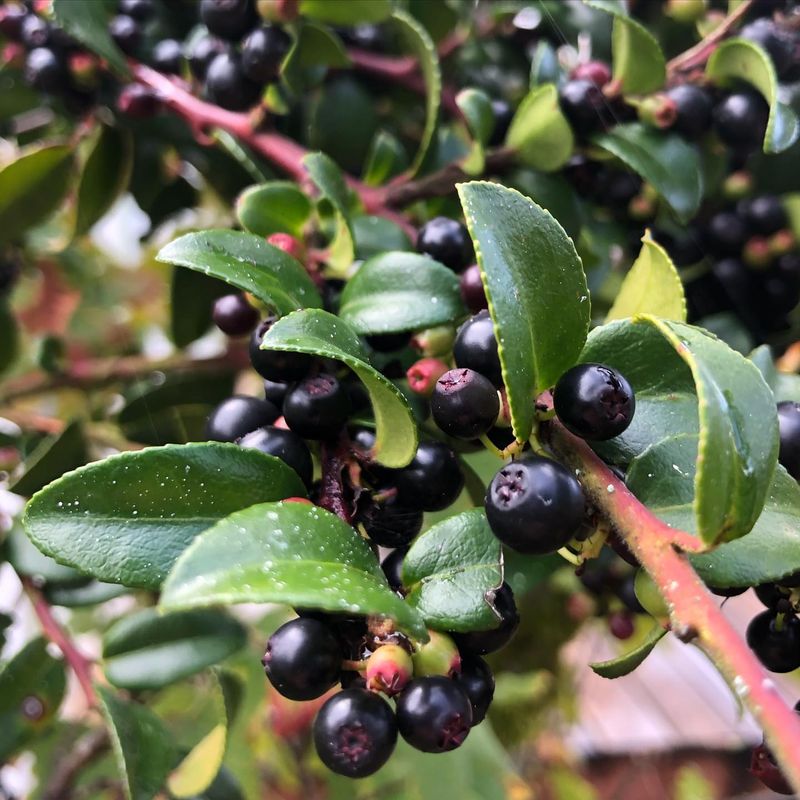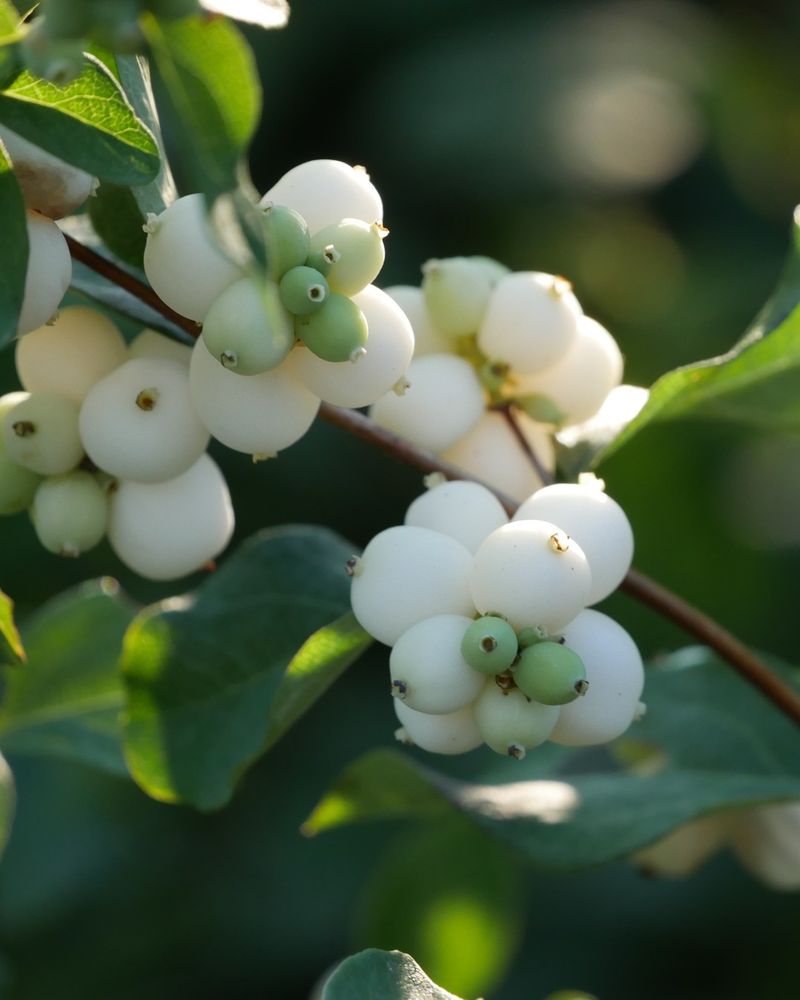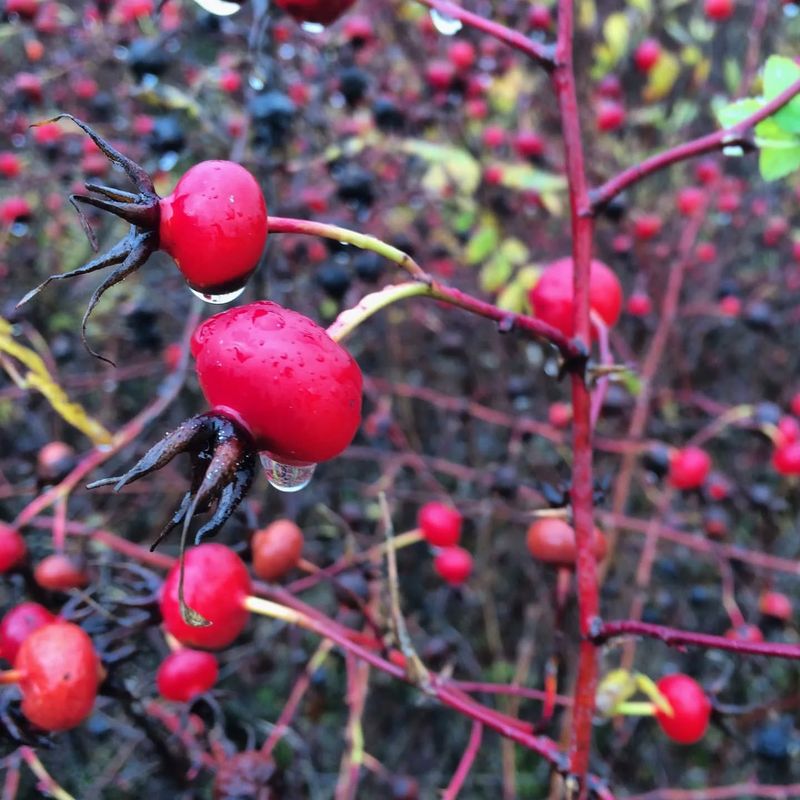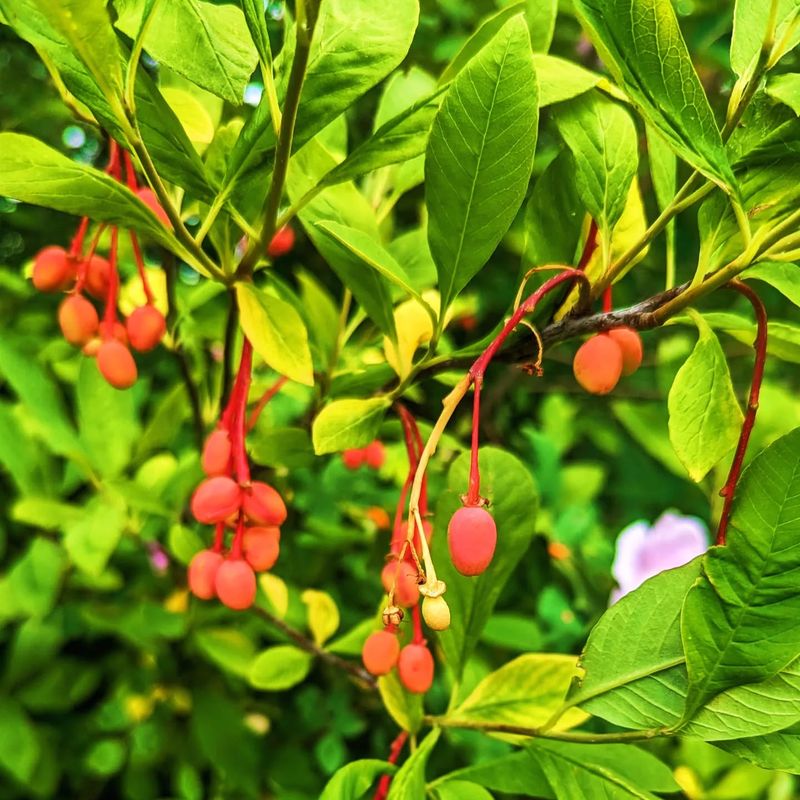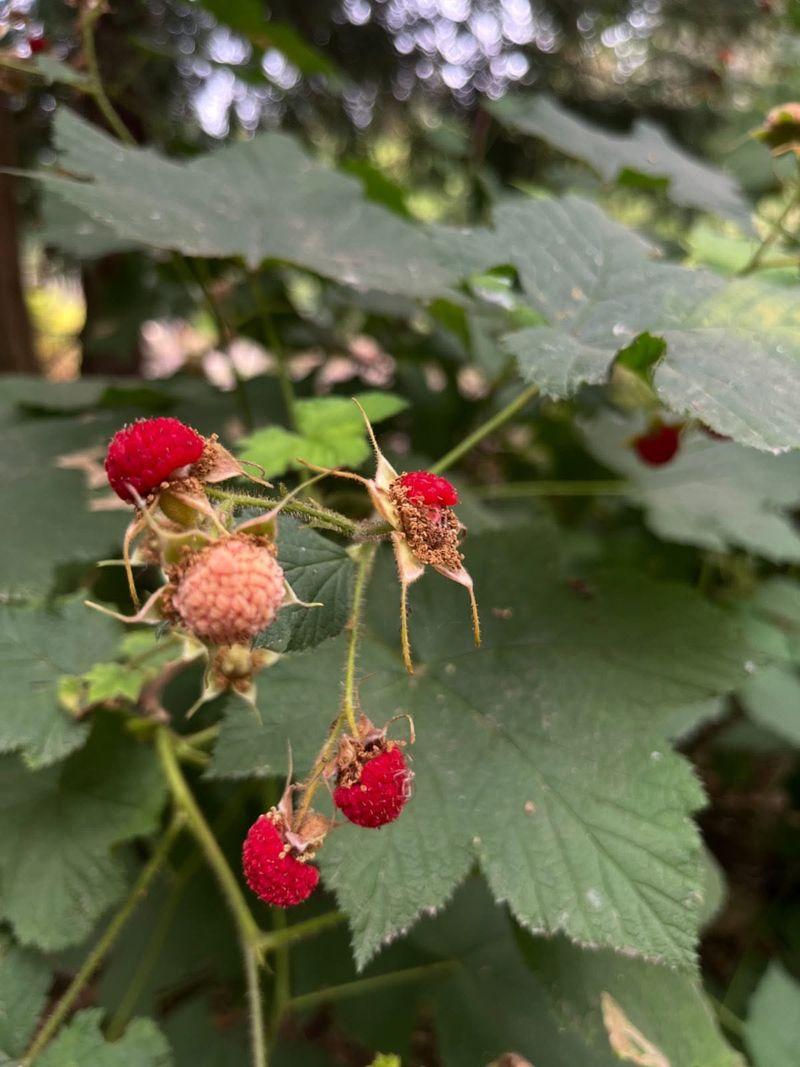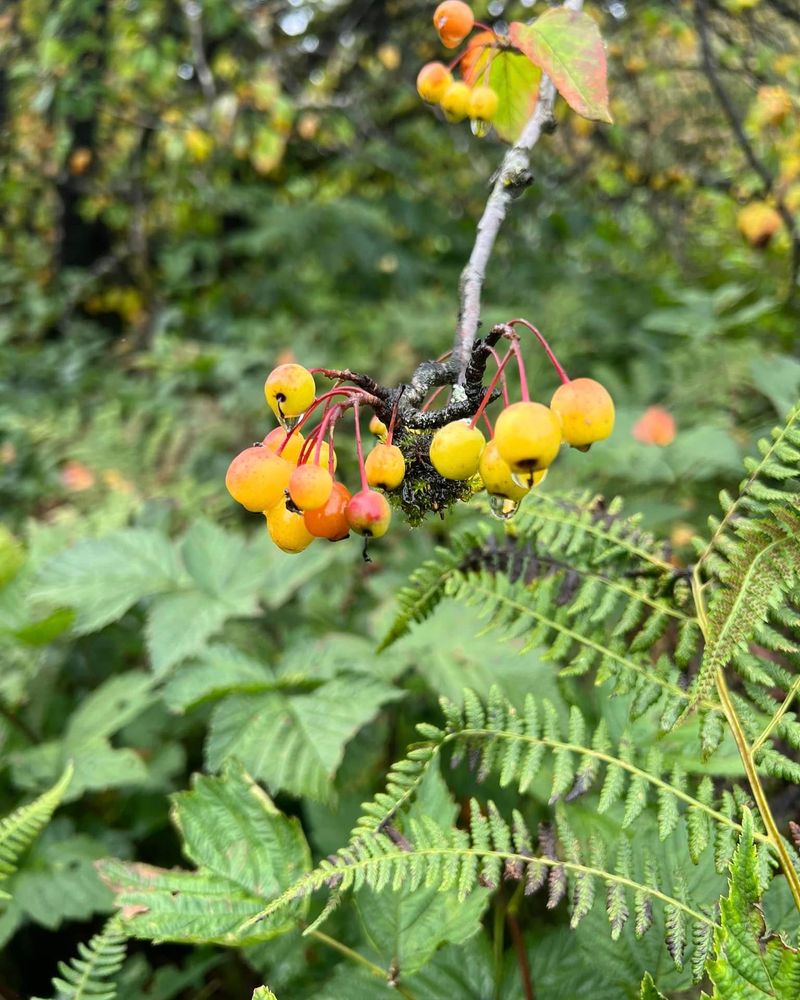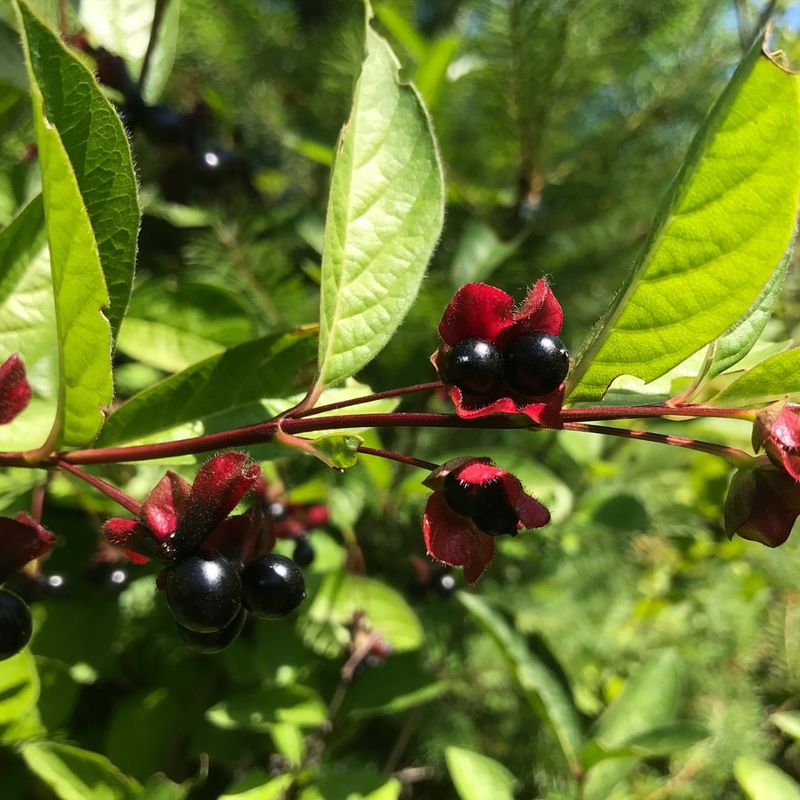Creating a living fence with native shrubs in your Seattle garden serves multiple purposes – privacy, beauty, and wildlife support. Native plants naturally attract local birds by providing food, shelter, and nesting sites.
When these shrubs are arranged as a fence or hedge, they create an eco-friendly boundary that transforms your garden into a vibrant bird sanctuary while maintaining your outdoor space’s boundaries.
1. Red-flowering Currant (Ribes sanguineum)
Hummingbirds flock to these stunning shrubs when their pink-to-red flowers bloom in early spring. The hanging clusters of blossoms appear before many other food sources are available, making them crucial for early-season pollinators.
Growing 6-10 feet tall, these deciduous shrubs form excellent privacy screens while producing small berries that feed robins, towhees, and waxwings in summer. Their drought tolerance once established makes them perfect for Seattle’s increasingly dry summers.
2. Oregon Grape (Mahonia aquifolium)
Bright yellow flowers in early spring give way to dusty blue berries by late summer on this evergreen showstopper. Birds absolutely adore the nutritious fruits that resemble tiny grapes, hence the name. Standing 3-6 feet tall with prickly, holly-like foliage, Oregon Grape creates an effective barrier while providing year-round structure.
The leathery leaves develop gorgeous burgundy tints in winter, adding seasonal interest to your garden fence even when other plants have gone dormant.
3. Salal (Gaultheria shallon)
Forest understory meets garden superstar with this adaptable evergreen. Leathery, glossy leaves form a dense thicket perfect for privacy screens and bird hideaways in shady spots. Pink urn-shaped flowers develop into dark purple berries by late summer – a favorite of thrushes, waxwings, and robins.
Growing 3-5 feet tall in gardens (taller in forests), salal thrives in Seattle’s acidic soils and creates excellent nesting habitat for ground-foraging birds like towhees and juncos.
4. Pacific Ninebark (Physocarpus capitatus)
Named for its fascinating peeling bark that reveals multiple layers, Pacific Ninebark brings architectural interest to living fences. White to pinkish flower clusters appear in late spring, attracting numerous pollinators.
Growing 6-13 feet tall, this deciduous native forms dense thickets where birds build nests and hide from predators. The seed capsules that develop after flowering provide food for chickadees and finches through winter. Bonus: deer typically avoid this shrub, making it perfect for areas with browsing pressure.
5. Red-osier Dogwood (Cornus sericea)
Winter brings this shrub’s most spectacular feature – brilliant red stems that glow against gray skies and snow. During summer, flat clusters of tiny white flowers attract butterflies before developing into white berries that birds devour. Growing 6-9 feet tall and equally wide, red-osier dogwood thrives in moist areas of Seattle gardens.
Over 40 species of birds eat the berries, including flickers, grosbeaks, and thrushes. The dense branching structure provides excellent cover for birds while creating a vibrant living fence year-round.
6. Serviceberry (Amelanchier alnifolia)
White star-shaped blossoms cover these shrubs in early spring, creating a dreamy cloud-like effect along your garden boundary. Come summer, sweet purple berries appear – so delicious that you’ll be competing with the birds for a taste! Cedar waxwings, robins, and bluebirds flock to serviceberry when fruits ripen. Growing 6-15 feet tall, these multi-stemmed shrubs provide excellent screening while offering beautiful fall color as leaves turn orange-red. Their early flowering makes them crucial for returning migratory birds seeking food after long journeys.
7. Mock Orange (Philadelphus lewisii)
Heavenly fragrance wafts through Seattle gardens when mock orange blooms in late spring. The sweet citrus scent from its white four-petaled flowers perfumes the air while attracting numerous pollinators that birds feed on. Growing 5-10 feet tall, this deciduous shrub creates excellent screening during growing seasons.
Birds appreciate the dense branching for nesting sites and protective cover. The Lewis’s mock orange (named for explorer Meriwether Lewis) tolerates Seattle’s clay soils and provides seeds that small birds eat through winter.
8. Tall Oregon Grape (Mahonia nervosa)
Spiky yellow flower clusters emerge in spring from this architectural evergreen, followed by powdery blue berries that birds can’t resist. Unlike its shorter cousin, tall Oregon grape reaches 5-10 feet, making it perfect for privacy screens.
The holly-like leaves with their sharp points deter unwanted garden visitors (both human and animal) while creating safe havens for birds. Thrushes, robins, and waxwings feast on the berries, while the dense foliage provides excellent cover year-round for juncos and sparrows seeking shelter from hawks.
9. Evergreen Huckleberry (Vaccinium ovatum)
Small pink bell-shaped flowers give way to glossy black berries on this Northwest native superstar. Birds and humans alike treasure these sweet fruits that resemble blueberries in taste and appearance. Growing 3-8 feet tall, evergreen huckleberry forms dense thickets with small, shiny leaves that remain green year-round.
Perfect for partly shaded fence lines in Seattle gardens, these shrubs attract thrushes, waxwings, and towhees when berries ripen. Their compact growth habit makes them ideal for smaller spaces needing bird-friendly boundaries.
10. Snowberry (Symphoricarpos albus)
Distinctive white berries persist through winter on this deciduous shrub, creating striking visual interest when other plants have gone dormant. The round fruits look like miniature snowballs against bare branches. Growing 3-6 feet tall, snowberry forms thickets perfect for fence lines and bird habitat.
Though the berries are mildly toxic to humans, birds like grosbeaks and thrushes eat them through winter when food is scarce. The dense branching structure provides excellent nesting sites for smaller birds like finches and sparrows.
11. Nootka Rose (Rosa nutkana)
Large pink flowers with five petals and sweet fragrance grace these thorny shrubs in early summer. After blooming, round red rose hips develop and persist through winter – providing essential food for birds during scarce months.
Growing 6-10 feet tall, Nootka rose forms impenetrable thickets with sharp thorns that create excellent security barriers and wildlife protection.
Birds nest safely within the thorny branches where predators can’t reach. The dense growth habit makes this native rose perfect for defining property lines while supporting dozens of bird species.
12. Indian Plum (Oemleria cerasiformis)
First to leaf out in late winter, Indian plum announces spring’s arrival with hanging clusters of white flowers. This early bloomer provides crucial nectar for hummingbirds and insects when few other sources exist.
Growing 6-15 feet tall, these deciduous shrubs develop small plum-like fruits that ripen from green to orange-red to bluish-black.
Birds strip the fruits quickly once ripe! The early fruiting schedule makes Indian plum especially valuable for birds raising young in early summer when they need high-energy food for growing nestlings.
13. Thimbleberry (Rubus parviflorus)
Large maple-like leaves create a lush green wall topped with white rose-like flowers in spring. The soft red berries that follow resemble raspberries but are flatter – like tiny red thimbles that birds adore. Growing 4-8 feet tall, thimbleberry spreads to form colonies perfect for fence lines and bird habitat.
Catbirds, thrushes, and waxwings feast on the fruits, while the dense foliage provides excellent nesting sites. The large leaves create cooling shade in summer and decompose into rich mulch in winter.
14. Pacific Crabapple (Malus fusca)
Fragrant pink-white blossoms cover these small trees in spring, attracting countless pollinators. The tiny crabapples that develop turn yellow-red by fall and often persist into winter – providing food when birds need it most. Growing 15-30 feet tall (but easily kept smaller with pruning), Pacific crabapple creates excellent tall screens or backdrop plantings.
Cedar waxwings, robins, and grosbeaks feast on the fruits. The dense, somewhat thorny branches provide safe nesting sites while the spring flowers support insects that birds feed to their young.
15. Twinberry (Lonicera involucrata)
Unusual yellow tubular flowers emerge in pairs, each surrounded by reddish bracts that later frame the glossy black berries.
Hummingbirds can’t resist the nectar-rich blossoms while other birds enjoy the fruits. Growing 5-10 feet tall, this honeysuckle relative creates excellent fence lines with its arching branches. The paired black berries give this shrub its common name and provide food for thrushes, warblers, and sparrows.
Though the berries are mildly toxic to humans, birds digest them safely and spread the seeds throughout your garden.

